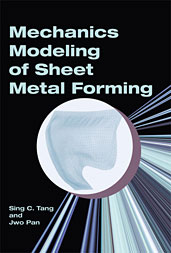Technical Paper
A CAE Based Stochastic Assessment and Improvement of Vehicle NCAP Response
2004-03-08
2004-01-0458
One of the primary issues in the interpretation of vehicle impact response data, observed from vehicle crash test events, is coping with variability. This vehicle response inconsistency generally causes test results to be unpredictable and makes CAE test validation work difficult as well. This paper, considering the uncertain characteristics of vehicle impact events, has implemented a stochastic assessment of vehicle NCAP response variation through a CAE vehicle impact model, and it has accomplished the three primary study objectives as stated follows: 1) Identify the response variation causing factors stochastically from various structural and environmental factor candidates and quantify the degree of their influences on crash response, 2) Develop a methodology for interpreting the significance of the factor effects in conjunction with vehicle impact mechanics and physics, and 3) Implement a stochastic improvement of the vehicle NCAP responses and their repeatability

